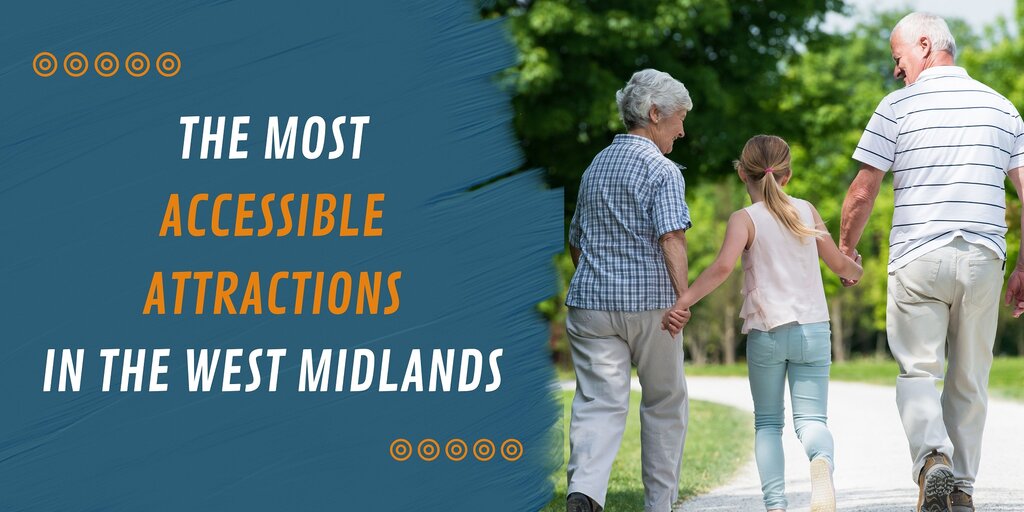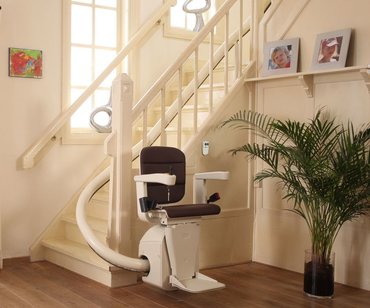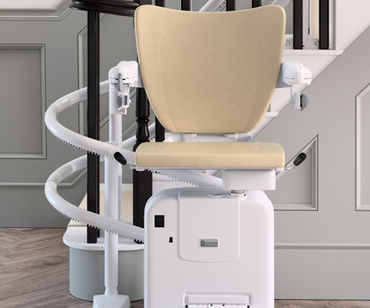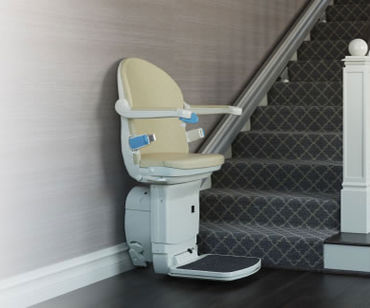The most accessible attractions in the West Midlands

The West Midlands is one of England's biggest counties and is home to a wealth of fantastic attractions. These top sites not only help keep the locals entertained, but visitors from far and wide travel to enjoy what’s on offer. With that said, how accessible are West Midland’s top attractions for those with limited mobility? Are they suitable for those who use stair lifts or wheelchair users? We have researched and ranked 10 of the West Midlands’ most popular attractions to see which locations come out on top.
Read on to discover the results and become introduced to these fantastic West Midlands attractions.
Key findings
- Cadbury World is the most accessible major West Midlands attraction, achieving a near-perfect accessibility score.
- The Birmingham Hippodrome and the Black Country Living Museum are tied for second, with both attractions scoring highly.
- Only four of the 10 West Midlands’ top attractions offer on-site disabled parking.
- All 10 attractions in the West Midlands that the study looked at are accessible to visitors with limited mobility.
What are the most accessible attractions in the West Midlands?
The West Midland’s top attractions by accessibility
READ ALSO: The most accessible attractions in Devon
Cadbury World
- Accessible Toilets: Yes
- Full Wheelchair Access: Yes
- Wheelchairs Available: Yes
- On-site Disabled Parking: Yes
- Carer Tickets or Free Entrance: Yes
- Google Review Score: 4.3/5
- Accessibility Score: 9.3/10
At Cadbury World in Birmingham, visitors can look forward to discovering the history of chocolate. Run by the Cadbury company, this self-guided exhibition tour includes 14 different zones telling the story of chocolate via sets, animatronics, video presentations, interactive displays, activities, and demonstrations. It’s the perfect family day out, with plenty of chocolate-tasting opportunities included.
Clare, from the family blog Mudpie Fridays, shares some insight into this important part of the tour: “Can you taste chocolate at Cadbury World? Yes, you can! Of course, we had been given a whole selection of chocolate at the entrance, much to the boys’ delight. But there is also the opportunity to taste. First, you get to pick two toppings from fudge, marshmallows, white chocolate buttons, Oreo, dark chocolate buttons, and then these get mixed with molten dairy milk in a little paper cup. It was delicious.”
When it comes to Cadbury World disabled access, the attraction ticks all the boxes and receives a near-perfect score in our study. There is full wheelchair access to every part of Cadbury World, with level access, ramps and lifts making things easy for visitors. There are also low-level service desks, disabled parking on site, and carer tickets available.
Learn more about Cadbury World’s accessibility.
Birmingham Hippodrome
- Accessible Toilets: Yes
- Full Wheelchair Access: Yes
- Wheelchairs Available: Yes
- On-site Disabled Parking: No
- Carer Tickets or Free Entrance: Yes
- Google Review Score: 4.7/5
- Accessibility Score: 8.7/10
Birmingham Hippodrome, located in Birmingham's Chinese Quarter, is the busiest single theatre venue in the UK. The venue is best known as being the home of the Birmingham Royal Ballet – one of the UK’s major ballet companies. As such, it’s the perfect place to take in a performance. If ballet isn’t your thing, then there is a host of other performances available, including touring West End shows, opera, and pantomime.
Birmingham Hippodrome’s wheelchair access is excellent, being very accessible to those with limited mobility. The theatre is one of the most accessible popular attractions in the West Midlands, providing important facilities such as ramps, lifts, and wheelchair positions inside the theatre itself. There is also an Access Assistance Point where visitors can receive assistance to help them enjoy their time at the Hippodrome. The only place it failed in our study was the lack of on-site disabled parking.
Learn more about Birmingham Hippodrome’s accessibility.
Black Country Living Museum
- Accessible Toilets: Yes
- Full Wheelchair Access: No
- Wheelchairs Available: Yes
- On-site Disabled Parking: Yes
- Carer Tickets or Free Entrance: Yes
- Google Review Score: 4.7/5
- Accessibility Score: 8.7/10
The Black Country Living Museum is one of the UK’s finest living museums, located in the centre of the Midlands’ Black Country, just 10 miles from Birmingham. This open-air museum provides a fascinating glimpse into life between 1850 and 1950 in this historic part of the world. Spread across 26 acres, visitors can explore historic buildings such as shops, houses, and industrial areas. With fascinating exhibitions, local artefacts, and an expansive transport collection of heritage vehicles, there’s plenty to look forward to.
Marion, from the Love Travelling Blog, has visited the museum and recommends checking it out: “There was so much to see at the museum, an old garage and petrol pumps, a 1930’s fairground and a worker’s institute. Several times, a steam engine trundled past, pausing to allow visitors to inspect the engine. It’s a splendid museum and definitely worth a full day’s visit on a fine day for anyone visiting Birmingham and the West Midlands.”
When it comes to disability access at the Black Country Living Museum, it is one of the best in the West Midlands. Visitors with limited mobility will find the museum has a number of helpful facilities, including on-site disabled parking, wheelchairs to hire, accessible toilets, and free carer tickets. Unfortunately, due to the historic nature of the museum, not all areas are accessible to wheelchair users, though ramps are available to provide access to many buildings.
Learn more about the Black Country Living Museum’s accessibility.
The Birmingham Botanical Gardens
- Accessible Toilets: Yes
- Full Wheelchair Access: Yes
- Wheelchairs Available: Yes
- On-site Disabled Parking: Yes
- Carer Tickets or Free Entrance: No
- Google Review Score: 4.5/5
- Accessibility Score: 8.5/10
The Birmingham Botanical Gardens is described as the green heart of the city as it offers a uniquely bio-diverse natural environment. The historic gardens were built back in 1829, and there is so much you can see.
There are more than 7,000 plants to explore in four Victorian Glasshouses and exciting outdoor gardens, including two alpine gardens, the Japanese Garden showcasing the National Bonsai Collection, and a Pinetum. The adventure playground is a great hit with children, as well as a rolling lawn overlooking an authentic bandstand and aviaries.
Blogger Charlotte Raff, who has enjoyed the botanical gardens in Birmingham before, highly recommends visiting:
“One of my favourite parts of the gardens was all the benches that were dedicated to people who had loved the gardens in the past. It was really heartwarming to read all the dedications about how much people had loved it there. I also loved the little cottage and the old shelter that has been carefully and lovingly moved from Bourneville and restored. The reason for this: It’s where Mr Cadbury used to eat his sandwiches on his break from the factory. Can you get any more Birmingham?”
The Birmingham Botanical Gardens' disabled access is excellent, with facilities such as accessible toilets, wheelchairs that visitors can hire, and on-site parking. The attraction is also fully accessible to wheelchair users. Although the attraction does not offer free tickets for visitors with limited mobility or their carers, it still received a strong accessibility score in our study.
Learn more about The Birmingham Botanical Gardens' accessibility.
Coventry Transport Museum
- Accessible Toilets: Yes
- Full Wheelchair Access: No
- Wheelchairs Available: Yes
- On-site Disabled Parking: No
- Carer Tickets or Free Entrance: Yes
- Google Review Score: 4.7/5
- Accessibility Score: 7.7/10
The Coventry Transport Museum is a testament to the city's rich automotive heritage. Boasting the world’s largest publicly owned collection of British vehicles (over 2,500), from early bicycles to iconic sports cars, the museum treats visitors to a captivating journey through the evolution of road transport. Highlights include the world's oldest motor tricycle and the world’s two fastest cars. With immersive galleries and engaging activities for all ages, there’s a lot of fun to be had.
Anca, from the blog Anca’s Lifestyle, has visited the museum and was very impressed by how much there was to see after making a last-minute decision to visit while in Coventry: “We were walking around the city, and we intended to see the art gallery. When we saw the transport museum, we thought we had time for a quick look. It was so big and fascinating that we ended up spending much more time than we anticipated, and we missed the art gallery altogether.”
While there isn’t full wheelchair access to every part of the museum, most areas are available to wheelchair users. Those with limited mobility will, therefore, find plenty to enjoy. Lifts are provided to both floors of the museum, and wheelchairs are available to hire for those who need them. There are also accessible toilets, and the café is fully wheelchair accessible. However, there is no on-site disabled parking available.
Learn more about the Coventry Transport Museum’s accessibility.
READ ALSO: How accessible are Cornwall’s most popular attractions?
The National Motorbike Museum
- Accessible Toilets: Yes
- Full Wheelchair Access: No
- Wheelchairs Available: Yes
- On-site Disabled Parking: Yes
- Carer Tickets or Free Entrance: No
- Google Review Score: 4.6/5
- Accessibility Score: 7.6/10
The National Motorcycle Museum is home to the largest collection of motorcycles in the UK, with around 350 on display. Since opening in 1984, this magnificent museum has become the largest motorcycle museum in the world and attracts around 250,000 visitors a year.
One of the biggest attractions for many visitors is the exhibits of the British machines, which celebrate more than the “60 Glorious Years” of motorcycle manufacturing in this country.
Although the museum is not fully accessible to wheelchair users, it does have plenty of facilities to help visitors with limited mobility. There are accessible toilets, on-site disabled parking is available, and wheelchairs can be hired at the venue. Guide dogs are also welcome, and the museum’s café is fully accessible to visitors with limited mobility.
Learn more about The National Motorbike Museum’s accessibility.
Library of Birmingham
- Accessible Toilets: Yes
- Full Wheelchair Access: Yes
- Wheelchairs Available: No
- On-site Disabled Parking: No
- Carer Tickets or Free Entrance: Yes
- Google Review Score: 4.5/5
- Accessibility Score: 7.5/10
Regarded by many as the most impressive library in the UK, The Library of Birmingham has a staggering 10 levels, and within the venue, there is a studio theatre that can seat up to 300 people.
Being located in Centenary Square, it, along with The REP and Symphony Hall, forms a cultural heart for the city, and many people visit the library to enjoy the impressive architecture both inside and outside.
Being such a modern building, the Library of Birmingham is fully accessible to wheelchair users and visitors with limited mobility, and accessible toilets are available. There are no wheelchairs that you can hire at the library, and there is no on-site parking available, but being located in the city centre means that there is accessible public transport available.
Learn more about the Library of Birmingham’s accessibility.
National Sea Life Centre
- Accessible Toilets: Yes
- Full Wheelchair Access: Yes
- Wheelchairs Available: No
- On-site Disabled Parking: No
- Carer Tickets or Free Entrance: Yes
- Google Review Score: 4.3/5
- Accessibility Score: 7.3/10
At the National Sea Life Centre Birmingham, you can dive in and explore some fascinating displays whilst learning about marine life from around the world. The centre has the UK's only 360° Ocean Tunnel, where you can marvel at sharks, giant turtles, and other animals. Other popular parts of the centre include an area where you can meet the UK's first sea otters and the Penguin Ice Adventure, where you can observe the cheeky antics of gentoo penguins.
Nichola from the Globalmouse Travels blog has been to the National Sea Life Centre in Birmingham, and she thoroughly enjoyed her visit:
“There are Sea Life Centres all over the UK, and Birmingham was our first visit to one. We were all really impressed with its diversity and engaging displays. Set alongside one of the city’s canals, visitors follow a walk around the aquarium. Here you can see over 1,000 creatures. National Sea Life Centre Birmingham is large, and you can spend many happy hours here.”
The Sea Life Centre in Birmingham has disabled access throughout the attraction, offers free entrance to carers and visitors with a disability, and has accessible toilets. Despite finishing eighth out of the 10 attractions in the study, it is still an accessible attraction, but by not offering wheelchairs to hire or on-site disabled parking, it did not receive maximum points.
Learn more about the National Sea Life Centre’s accessibility.
The Coventry Music Museum
- Accessible Toilets: Yes
- Full Wheelchair Access: Yes
- Wheelchairs Available: No
- On-site Disabled Parking: No
- Carer Tickets or Free Entrance: No
- Google Review Score: 4.8/5
- Accessibility Score: 6.8/10
The Coventry Music Museum is unique in the fact that it is run entirely by volunteers, and it is the lifelong vision of Coventry Music Historian and Journalist Pete Chambers and his wife, Julie.
The museum is award-winning, and it celebrates music from Coventry and Warwickshire. From the Ska-powered 2-Tone movement of the Specials and The Selecter to Hazel O’Connor, King, The Enemy, and so much more.
The museum is suitable for wheelchair users, and there is an accessible toilet on the site, but there are no wheelchairs that you can hire, and there is no on-site accessible parking available. The museum does have a stairlift, and the staff at the attraction are on hand to explain the exhibits to the blind and partially sighted visitors.
Learn more about the Coventry Music Museum’s accessibility.
Coventry Cathedral
- Accessible Toilets: Yes
- Full Wheelchair Access: No
- Wheelchairs Available: No
- On-site Disabled Parking: No
- Carer Tickets or Free Entrance: Yes
- Google Review Score: 4.7/5
- Accessibility Score: 6.7/10
A striking mix of old and new, Coventry Cathedral is not only a place of worship but of great history, too. There are technically two cathedrals on the site, with the first being the shell of a beautiful Gothic cathedral bombed during WW2 and the second newer cathedral built adjacent to the old and consecrated in 1982. The ruins of the old cathedral are stunning and still retain its lovely spire – the tallest structure in Coventry. There are guided tours available, a museum, and an opportunity to climb the tower.
While Coventry Cathedral is the least accessible of the attractions looked at in this study, it still provides a number of facilities, such as accessible toilets, lifts, ramped entrances, and level access to the ruins. However, not all of the site is accessible to wheelchair users, and there is no on-site disabled parking available.
Learn more about Coventry Cathedral’s accessibility.
Methodology
Looking at 10 of the West Midlands’ most popular attractions as recommended by Google’s ‘things to do’ in the West Midlands feature, we assigned a score out of 10 to each attraction based on how they performed against different accessibility criteria.
The criteria we looked at were:
- Accessible Toilets
- Full Wheelchair Access
- Wheelchairs Available
- On-site Disabled Parking
- Discounted Carer Tickets or Free Entrance
- Google Review Score
You can see the full findings, scores, and resources used in this Google sheet.
READ ALSO: Most accessible attractions in Yorkshire
In this guide, we have analysed the accessibility of the most popular attractions in the West Midlands, revealing the facilities they offer and those they don’t to those who live with limited mobility. If you require the aid of mobility equipment like straight stairlifts and curved stair lifts, please book a free home assessment.
For more accessibility guides, data-led content, and mobility articles, make sure to visit our news page.



